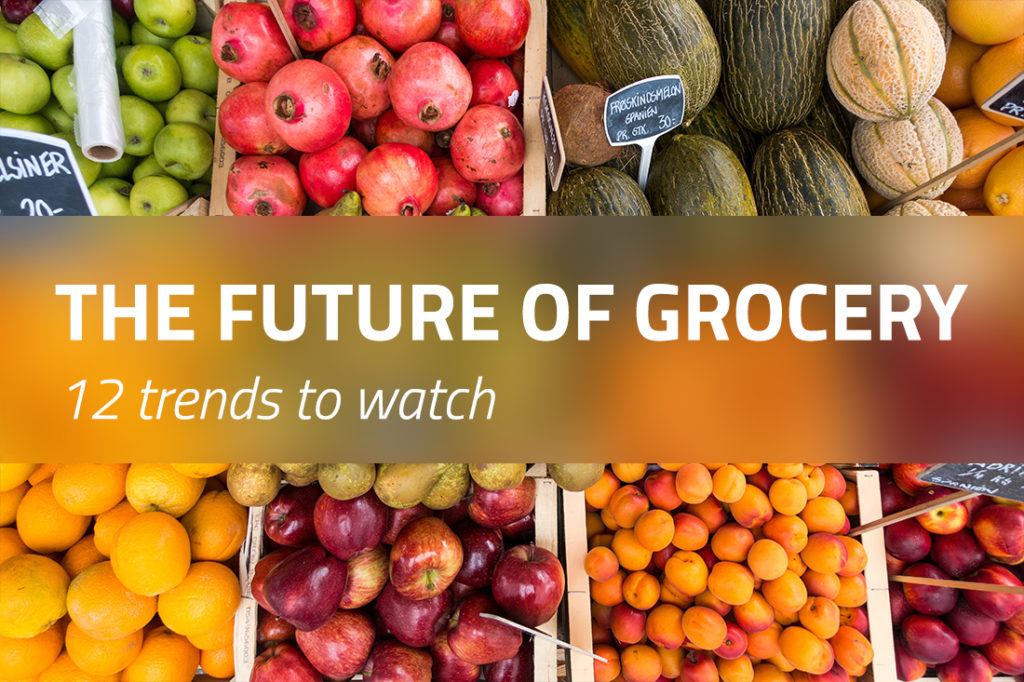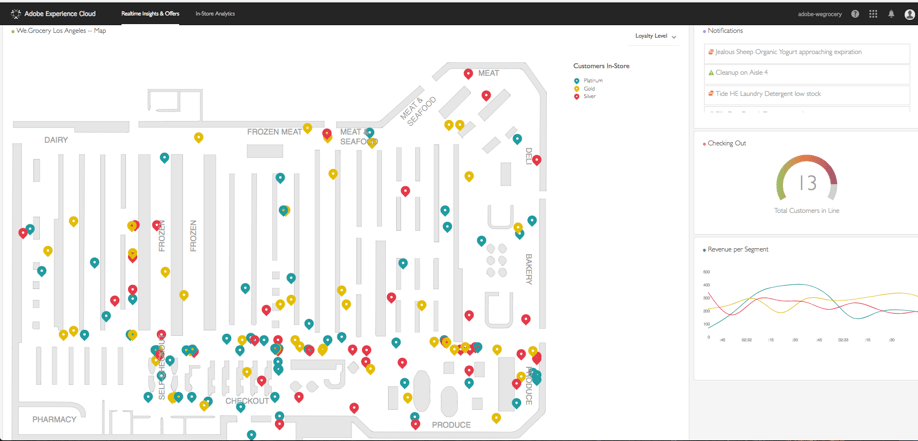
The Future of Grocery: 12 Trends to Watch
The food technology sector has expanded considerably recently and it’s only getting bigger. Leaders in the industry have launched venture funds and programs that will pour even more money into the sector.
Grocery chains that have announced a collaboration with e-commerce platforms and CPG (consumer packaged goods) brands are racing to gain profit from the current trends. Here are the top grocery trends which are likely to shape the space going forward.
1. Recreation > Shopping
More and more consumers are spending money on restaurants and bars than actually shopping for groceries. For the first time ever, Americans spend more on dining out than buying groceries. One reason is restaurants’ increased focus on appealing to the millennial generation.
Younger generation diners are known to be more willing to spend money on food away from home. Millennials have a different attitude toward food than the generations before them and they are likely to spend more on experiences, such as fun-based dining at bars and restaurants, than on cooking. They prefer fast food and other quick-service restaurants over casual dining.
2. Introduction of Mixed Spaces
In many parts of the world, mixed-use developments are being proposed. An example of such a mixed space is a grocery store with bars and restaurants in the same building. Such a mixed-space project is expected to be built in 2019 in downtown Cincinnati.
This two-level grocery store will be unique in many ways, beginning with a second-floor bar and food hall with terrace, several third-party restaurants and other vendors offering ready-to-eat products.

3. Grocery Auto-Replenishment
Many industry giants like Amazon are likely to introduce the auto-replenishment service to give relief to consumers who worry about running out of essentials in the home. Such ‘Subscribe & Save’ programs serve as expedient ways to save money on items consumers use on a regular basis while making sure they don’t run out.
Consumers signing up for such programs are free to select the delivery schedule suiting their needs. They can select the frequency of receiving new orders, and the items are shipped automatically as scheduled.
4. Anchor Stores Replacing Grocery in Malls
Due to higher rates paid by new anchors, grocery stores have given way to new tenants in those spaces. Restaurants are now becoming destinations and anchor tenants in their own right. With the growing popularity of entertainment, a large number of theatres are moving into departmental store spaces in malls. Beyond dining and entertainment, categories such as sporting goods, fast-fashion, home furnishing, and cosmetics are increasingly taking space in existing anchor locations.
5. Pop-Up Grocery
Initiatives in the form of on-the-go grocery stores are popping up everywhere to supply fresh food products to people.. Such programs intend to help improve the diets of people living in areas where high-quality, fresh foods are not easily obtainable.
In 2019, several mobile and temporary pop-up markets are likely to be set up in “food deserts,” as they are called – low-income areas that are a mile or more away from a grocery store. These markets sell fresh foods and vegetables. Many non-profit organizations are getting involved in such initiatives to make healthy food products available to food desert areas.
6. Automated Grocery Kiosks
Both Amazon and Walmart are experimenting with automated grocery kiosks, which act like vending machines for online grocery orders. Employees pick and pack the orders and store them in bins in kiosks attached to stores where the customers can drive to collect them.
The kiosks feature refrigerators and freezers to keep the grocery items fresh. Customers can place the orders online then receive an email with a scannable barcode to use when picking up the order from a kiosk. The two giants are planning on increasing the number of kiosks at different places, allowing more customers to pick up their packaged orders without having to interact with staff.
7. No More One-Stop Grocery Shopping
Reports suggest that consumers are getting less attracted to one-stop-shop supermarkets and returning to the shopping methods of the 1950s. On average, shoppers visit more retailers and shop more frequently. Today’s shoppers prefer visiting two to three grocery stores rather than shopping at one destination.
One reason is that consumers want to reduce their in-store time by using technologies like click-and-pick-up or home delivery by shopping online. They also prefer visiting multiple smaller stores to stay away from carrying a laden cart through a large area.
8. Changing Scenario of Prepared Foods
People have started spending more on meals prepared away from home than those prepared in the home. The trend of dining-out is continuing as shoppers prefer convenient solutions for foods tasting great and fresh.
With this growing trend, retailers need to find ways to offer more varieties of grab-n-go foods than just salads, soups and sandwiches. Small-scale grocers can leverage the knowledge of their consumer preferences and keep up with the competition bigger chains are posing with high-quality meals.
9. Customer-Centric Shopping Experiences
With more than half of grocery sales being influenced by a digital world, the sector moves closer to categories like home, apparel, health, and auto. With increasing demand for online shopping and best in-store experience, retailers are forced to make their businesses customer-centric.
Introduction of well-designed websites and educational resources is vital to let shoppers conduct pre-shopping research online. Mobile apps can be used to educate consumers and send them targeted in-store messages for better experiences.
10. Increased Expectations from Packaging
More and more consumers today prefer packaging that works better for their own health and the health of their environment.
Demands for clean packaging are rising, and brands and retailers must think about innovative packaging that works harder to protect freshness, nutrients, and taste.
Packaging materials have started showing an increased impact on buying decisions. Along with healthy ingredients, grocery shoppers will demand healthy packaging.
11. Ultimate Convenience
The preference for convenient methods of stocking up on grocery items is likely to grow. Online shopping is definitely a great option while pick-up and drive-up are gaining momentum. The recent introduction of Drive-Through Grocery Shopping has changed the way shoppers perceive convenience.
Customers can select the products online, select the pickup option, then drive to the store and collect the order. Options may include a kiosk or an attendant who loads the order in the vehicle.
12. Innovative Ways for Retailers to Target Shoppers
A new retail innovation project from Adobe Labs allows tracking live foot traffic in a grocery store and categorizes the shoppers according to the type of products they buy or money they spend.
Retailers can use the technology to segment the shoppers and understand their needs and target offers to them. The offers can be sent to the customer through app notification or in-store screen. Such a real-time tracking of consumers would revolutionize the way retailers target their shoppers.

